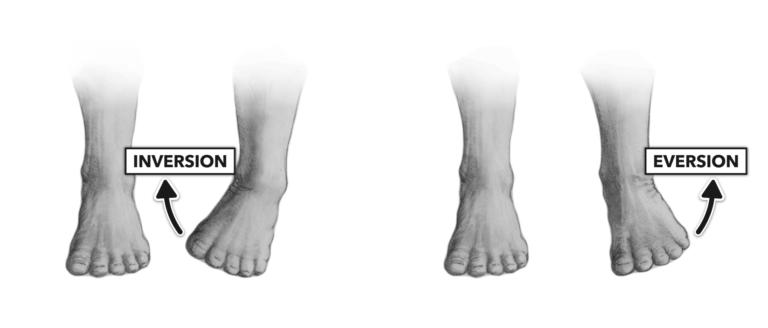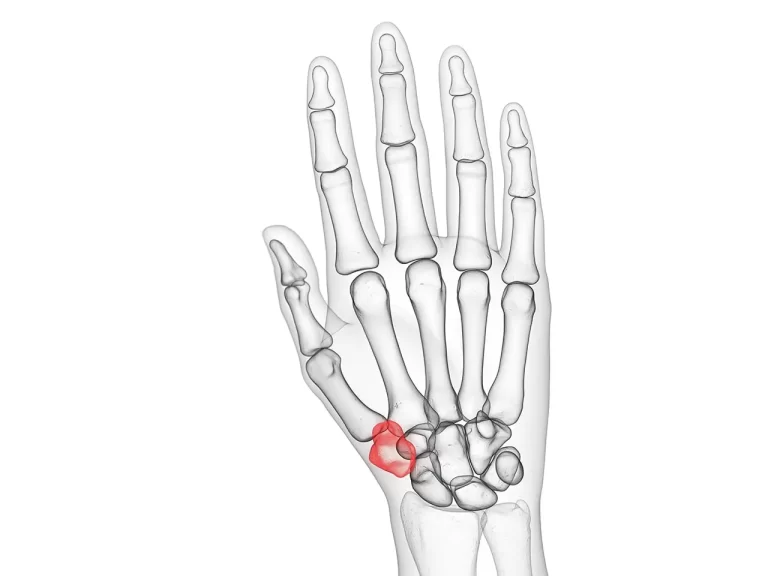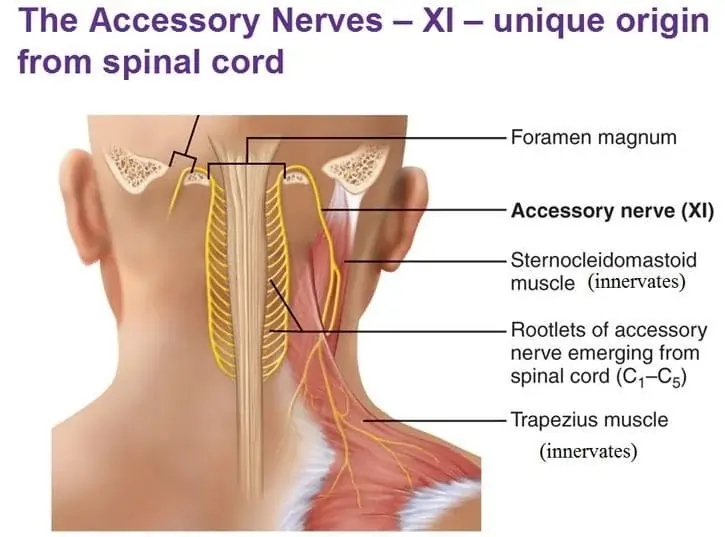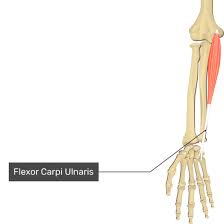Ankle Inversion And Ankle Eversion
Table of Contents
What is an Ankle Inversion And Ankle Eversion?
Ankle inversion and ankle eversion refer to movements that occur at the ankle joint. The ankle joint is formed by the tibia, fibula, and talus bones, and it allows for dorsiflexion (bringing the foot upward) and plantarflexion (pointing the foot downward).
Ankle inversion is the movement of the sole of the foot inward, towards the midline of the body. This movement involves the lateral (outer) edge of the foot being elevated while the medial (inner) edge of the foot moves downward. Ankle inversion primarily involves the actions of the muscles in the lateral compartment of the lower leg, including the tibialis anterior, extensor hallucis longus, and extensor digitorum longus. It is a common movement during activities such as walking, running, and jumping.
Ankle eversion, on the other hand, is the movement of the sole of the foot outward, away from the midline of the body. This movement involves the medial edge of the foot being elevated while the lateral edge of the foot moves downward. Ankle eversion primarily involves the actions of the muscles in the medial compartment of the lower leg, including the tibialis posterior and the flexor digitorum longus. Ankle eversion is less common and generally occurs during specific movements such as walking on uneven surfaces or during certain sports activities.
Both ankle inversion and ankle eversion are important for maintaining balance, stability, and proper foot function. These movements allow the foot to adapt to various surfaces and help with weight distribution during dynamic activities. However, excessive or uncontrolled ankle inversion or eversion can lead to ankle sprains or other injuries, especially if the muscles, ligaments, or tendons surrounding the ankle are weak or imbalanced.
Understanding the biomechanics and proper control of ankle inversion and eversion is crucial for athletes, physical therapists, and anyone involved in activities that place demands on the ankle joint. Rehabilitation programs and exercises often target these movements to improve ankle stability, prevent injuries, and promote optimal foot function.
Ankle Inversion
What Is Ankle Inversion?
Ankle inversion refers to a type of motion or movement that occurs in the ankle joint. The tibia (tibia and fibula) and the calcaneus of the foot articulate to produce the ankle joint. Ankle inversion is specifically related to an inward movement or tilting of the foot, in which the sole of the foot turns inward toward the midline of the body.
In a neutral standing position, the foot is in a slightly rotated position, with the sole slightly outward. Ankle rotation occurs when the foot rolls inward past the neutral position. This movement occurs mainly in the subtalar joint, which is located below the ankle joint and allows the foot to pivot and rotate.
Ankle sprains can happen on purpose or accidentally. For example, when walking on uneven surfaces, making sudden changes of direction, or playing sports that involve rapid changes of motion, there is a risk that the ankle will accidentally roll or twist, resulting in an ankle sprain. This can lead to sprains, strains, or other ankle injuries, especially if the foot is forcibly turned beyond its normal range of motion.
It is worth noting that ankle inversion is the opposite of ankle inversion, which means turning the foot outward or away from the midline of the body. Both inversion and inversion of the ankle play an important role in maintaining balance, stability, and proper function of the foot and ankle complex.
Ankle Invertor Muscles
Ankle inversion is primarily controlled by a group of muscles called the ankle invertors. These muscles work together to produce internal movement of the leg. The main invertor muscles of the ankle joint are:
- Tibialis anterior: The front of the lower thigh is where this muscle is found. It originates from the upper two-thirds of the tibia and is located on the medial fibula and first metatarsal of the foot. The tibialis anterior muscle is the main muscle responsible for dorsiflexion (raising the leg) and ankle rotation.
- Tibialis Posterior: Located deep in the back of the lower leg, the tibialis posterior muscle originates from the interosseous membrane (between the tibia and fibula) and the back surfaces of the tibia and fibula. It enters various bones of the foot, including the navicular, metatarsals, and metatarsals. The tibialis posterior muscle is a powerful ankle joint inverter and also helps maintain the arch of the foot.
- Flexor hallucis longus: This muscle is located deep in the back of the lower leg, next to the back of the shin. It originates from the backbone and inserts into the base of the distal phalanx of the big toe. Although its main function is to flex the big toe, it also contributes to the rotation of the ankle.
- Flexor digitorum longus: Similar to the flexor hallucis longus, this muscle is placed deep in the back of the lower leg. It originates at the back of the tibia and inserts into the base of the distal toes of the smaller toes (second to fifth). The flexor digitorum longus primarily flexes the smaller toes but also helps rotate the ankle.
These muscles work in a coordinated manner to produce ankle rotation and are important for maintaining balance, stability, and proper alignment of the feet and ankles during walking, running, and various weight-bearing activities.
Range Of Motion Of Ankle Inversion
Ankle reverse range of motion (ROM) refers to the degree of inward movement or pronation of the foot at the ankle joint. The normal range of motion for an ankle inversion varies between individuals but usually falls within a certain range.
In a healthy ankle, the normal range of motion for an ankle inversion is about 20-30 degrees. This means that the leg can bend inwards or rotate from the neutral position by about 20-30 degrees. This ROM allows the right foot and ankle to function during activities such as walking, running, and jumping.
It is important to note that range of motion can vary based on factors such as a person’s anatomy, flexibility, and any pre-existing conditions or injuries that may affect the ankle. Of course, some people may have more or less reverse ROM than others.
Excessive ankle inversion beyond the normal range of motion can increase the risk of ankle sprains and other injuries. It is very important to maintain a balance between ankle mobility and stability to ensure proper function and prevent injury. If you are concerned about the movement of your ankle, it is recommended that you consult a doctor, such as a physiotherapist or an orthopedist, who can assess your specific situation and provide appropriate guidance.
To test the variety of motion (ROM) of ankle inversion, you may carry out an easy size known as the goniometric size. Here’s a step-via way of means of-step manual on how to test ankle inversion ROM:
- Sit or lie down comfortably, together along with your leg prolonged directly in front of you.
- Securely stabilize the decreased leg to save your motion. You can use your palms or a strap to maintain the leg in place, making sure that best the ankle joint can move.
- Locate the axis of the ankle joint. This is generally located on the midpoint of the ankle, among the bony prominences at the inside (medial malleolus) and outside (lateral malleolus) of the ankle.
- Attach a goniometer to the ankle joint axis. The goniometer is a tool with a desk-bound arm and a transferring arm that measures angles.
- Align the desk-bound arm of the goniometer parallel to the lengthy axis of the decrease leg, and the transferring arm parallel to the lengthy axis of the foot.
- Ask the individual to actively invert their foot via way of means of tilting it inward as long way as possible. Make positive they carry out the motion without compensating via way of means of transferring their leg or different elements in their body.
- Read and report the perspective indicated via way of means of the goniometer in which the desk-bound and transferring fingers intersect. This perspective represents the diploma of ankle inversion.
- Repeat the size in some instances to make sure accuracy and consistency.
It’s essential to observe that goniometric measurements are typically executed via way of means of skilled healthcare professionals, inclusive of bodily therapists. If you are uncertain or have issued approximately acting the size yourself, it is endorsed to seek advice from a healthcare expert who can appropriately investigate your ankle inversion ROM and offer suitable steerage primarily based totally on your particular situation.
Ankle Inversion Test
The Ankle Inversion Test is a scientific evaluation used to assess the steadiness and integrity of the lateral ligaments of the ankle. This check particularly assesses the ankle’s capacity to withstand inversion forces and facilitates pick-out capacity ligamentous injuries, in particular lateral ankle sprains. Here’s how the Ankle Inversion Test is usually finished:
- Position: The character present process the check need to be in a seated or supine function with the leg extended.
- Stabilization: The examiner stabilizes the decreased leg to save you from any undesirable motion throughout the check. This may be done via way of means of conserving the leg simply above the ankle or the usage of a strap to steady the decreased leg.
- Movement: The examiner holds the foot on the heel and applies an inversion pressure, lightly tilting the foot inward.
- Resistance: The character being examined is told to withstand the inversion pressure carried out via way of means of the examiner. They need to try to preserve the foot in an impartial function and save it from tilting inward.
- Assessment: The examiner observes and evaluates the character’s capacity to withstand the inversion pressure. They are aware of any immoderate motion, ache, or instability withinside the ankle joint throughout the check.
The Ankle Inversion Test is usually finished bilaterally, evaluating the affected ankle (if there’s an injury) to the unaffected ankle. Any vast variations in stability, variety of motion, or ache skills among the 2 aspects can suggest a capacity ankle ligament injury.
It’s critical to be aware that the Ankle Inversion Test need to be finished via way of means of an educated healthcare professional, along with a bodily therapist or orthopedic specialist. They can appropriately check the ankle stability, interpret the results, and offer suitable remedies and pointers primarily based totally on the findings.
Exercise For Ankle Inversion
Strengthening sports for ankle inversion can assist enhance the steadiness and electricity of the muscular tissues concerned with controlling the inward motion of the foot. Here are some sports that may be useful for ankle inversion:
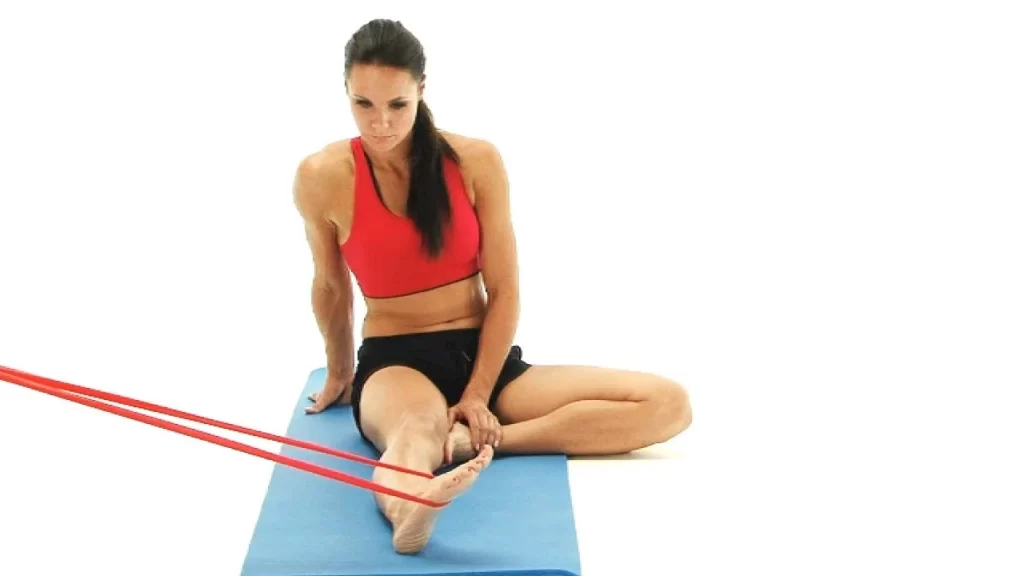
- Resistance Band Ankle Inversion:
- Sit on a chair or the ground together along with your legs prolonged in front of you.
- Loop a resistance band across the ball of your foot and preserve the ends of the band together along with your hands.
- Start together along with your foot in an impartial role (now no longer inverted or everted).
- Against the resistance of the band, slowly invert your foot via way of means of pulling the band toward your body.
- Hold the location for some seconds after which go back to the beginning role.
- Perform 2-three units of 10-15 repetitions on every foot.
2. Towel Curls:
- Sit on a chair together with your toes flat on the ground.
- Place a small towel or material below your foot.
- Use your feet to curve and scrunch the towel in the direction of you, growing resistance.
- Continue the curling movement till the towel is absolutely pulled in the direction of you.
- Relax and repeat for 2-three units of 10-15 repetitions on every foot.
3. Single Leg Balance with Ankle Inversion:
- Stand close to a wall or robust aid for stability.
- Lift one foot off the floor and stability on the opposite foot.
- Slowly invert the foot via way of means of tilting it inward at the same time as retaining stability.
- Hold the inverted role for some seconds, then go back to an impartial role.
- Aim to step by step boom the time you could preserve the location.
- Perform 2-three units of 10-15 repetitions on every foot.
4. Alphabet Writing:
- Sit on a chair or the ground together along with your legs prolonged in front of you.
- Lift one foot off the floor and consider you’re writing the letters of the alphabet withinside the air the use of your foot.
- Focus on the use of managed and specific movements, specifically emphasizing the inward or inversion movement.
- Perform the workout with every foot, aiming to finish the complete alphabet.
Remember initially sports which can be suitable for your health stage and step by step development as you advantage electricity and stability. If you’ve got any current ankle accidents or concerns, it is usually an awesome concept to visit a healthcare professional, consisting of a bodily therapist, who can offer customized steerage and sports primarily based totally on your unique needs.
Special Test For Ankle Inversion
Special checks are scientific checks which are specially designed to assess positive systems or features of the body. While there aren’t any specific “unique checks” for ankle inversion, there are some checks normally used to evaluate ankle balance and capability ligamentous accidents which can arise for the duration of ankle inversion. These checks assist decide the integrity of the lateral ligaments and perceive capability ankle instability. Here is more than one normally used unique check for ankle instability associated with inversion:
- Anterior Drawer Test:
- Position the individual being examined in a seated or supine function with the knee flexed at ninety degrees.
- Stabilize the decreased leg with one hand whilst preserving the foot with the alternative hand.
- Apply head pressure at the heel whilst concurrently stabilizing the decreased leg, trying to anteriorly translate the talus bone inside the ankle joint.
- Assess for any immoderate anterior translation or joint laxity as compared to the unaffected side.
- This takes a look at and often evaluates the stableness of the anterior talofibular ligament (ATFL), that’s normally injured for the duration of ankle inversion.
2. Talar Tilt Test:
- Position the individual being examined in a seated or supine function with the foot comfortable and the ankle in an impartial function.
- Stabilize the decreased leg to save your motion.
- Apply an inversion pressure to the foot, trying to tilt the foot inward.
- Assess for any immoderate inversion motion or joint laxity as compared to the unaffected side.
- This takes a look at and often evaluates the stableness of the calcaneofibular ligament (CFL) and the ATFL.
It’s essential to be aware that unique checks have to be executed through educated healthcare professionals, which includes bodily therapists or orthopedic specialists, who have the important know-how to appropriately interpret the results. These checks are usually a part of a complete evaluation and are blended with different bodily exam strategies and imaging studies, if important, to reach a correct analysis and suitable remedy plan.
Ankle Eversion
What Is Ankle Eversion?
Ankle eversion refers to a selected sort of motion or movement that happens on the ankle joint. It is the other motion of ankle inversion. Ankle eversion entails the outward tilting or motion of the foot far from the midline of the body.
In an impartial status position, the foot is barely everted, with the only going through barely outward. Ankle eversion happens while the foot rolls outward past the impartial position. This motion mainly occurs on the subtalar joint, which is positioned underneath the ankle joint and lets in for inversion and eversion of the foot.
Ankle eversion can arise deliberately or accidentally. It is worried in moves that include stepping outward, on foot at the outer fringe of the foot, or taking part in sports that require lateral moves.
Similar to ankle inversion, ankle eversion additionally performs a function in preserving balance, stability, and the right feature of the foot and ankle complex. The muscle tissues accountable for ankle eversion consist of the peroneus longus, peroneus brevis, and peroneus tertius, which can be positioned at the outer facet of the decreased leg. These muscle tissues paintings collectively to provide the outward motion of the foot for the duration of ankle eversion.
Ankle Evertor Muscles
The ankle evertor muscular tissues are a set of muscular tissues placed at the lateral (outer) facet of the decreased leg. These muscular tissues are liable for the motion of ankle eversion, that’s the motion of the foot far from the midline of the body. Eversion takes place whilst only the foot turns outward.
The most important ankle evertor muscular tissues include:
- Peroneus longus: This muscle originates from the top and higher two-thirds of the lateral fibula (the smaller of the 2 decreased leg bones) and runs down the leg to insert into the primary metatarsal bone and the medial cuneiform bone withinside the foot. It assists in ankle eversion and additionally performs a position in stabilizing the arch of the foot.
- Peroneus brevis: It originates from the decreased two-thirds of the lateral fibula and inserts into the bottom of the 5th metatarsal bone (at the outer facet of the foot). The peroneus brevis is by and large liable for ankle eversion.
These muscular tissue paintings collectively supply ankle eversion and play an essential position in keeping stability and balance at some stage in sports including walking, running, and jumping. They additionally offer assistance to the lateral facet of the ankle, assisting to save you immoderate inward rolling (inversion) of the foot, which could result in ankle sprains or different injuries. Strengthening and stretching physical games for those muscular tissues are regularly blanketed in ankle rehabilitation programs.
Range Of Motion Of Ankle Eversion
The variety of movement of ankle eversion refers to the quantity of motion the ankle can obtain whilst the foot is grown to become outward (everted) far from the midline of the body. The everyday variety of movement for ankle eversion is usually around 20 degrees.
To degree ankle eversion, a goniometer, a specialized device for measuring joint angles, may be used. The beginning function for the dimension is with the foot in an impartial function, pointing immediately ahead (0 degrees). The foot is then moved outward, far from the midline of the body, and the goniometer is aligned with the lengthy axis of the leg and the lengthy axis of the foot. The perspective among those axes is measured, and this is the variety of movement for ankle eversion.
It’s crucial to observe that the variety of movement can range from man or woman to man or woman, and positive elements together with preceding injuries, muscle tightness, or joint situations might also additionally have an effect on the everyday variety. If you observed any troubles together along with your ankle’s variety of movement, it’s miles endorsed to talk over with a healthcare expert or a bodily therapist who can offer a greater correct evaluation and suitable remedy if necessary.
To take a look at the variety of movement of ankle eversion, you may carry out the subsequent steps:
- Find an appropriate location: Choose a well-lit and snug place in which you may carry out the dimension easily. Ideally, you have to have sufficient area to take a seat down or lie down comfortably.
- Position yourself: Sit on a chair or lie down for your return together along with your leg prolonged in front of you. Make certain your knee is direct and your foot is relaxed.
- Locate anatomical landmarks: Identify the bony landmarks for your leg and foot. On the leg, discover the pinnacle of the fibula, that’s a bony prominence at the outer facet of the knee. On the foot, discover the bottom of the 5th metatarsal bone, that’s a bony prominence at the outer facet of the foot close to the little toe.
- Align the goniometer: Take a goniometer, that’s a protractor-like tool used to degree joint angles. Align the middle of the goniometer with the pinnacle of the fibula, making sure that the desk-bound arm factors toward your knee and the movable arm factors toward your foot.
- Establish the beginning position: Position your foot in an impartial position, with the feet pointing directly ahead. This is taken into consideration zero tiers of ankle eversion.
- Perform the dimension: Move your foot slowly and smoothly, turning it outward (everted) far from the midline of your body. While retaining the alignment of the goniometer, prevent while you sense a cushy quiet variety of movement or till you can not pass any further.
- Read the attitude: Once you’ve got reached the quit variety, examine the attitude indicated at the goniometer in which the desk-bound arm and movable arm intersect. This dimension represents your ankle’s variety of movement for eversion.
- Repeat for accuracy: For an extra correct dimension, you may carry out the dimension in more than one instance and take the common of the readings.
It’s really well worth noting that in case you enjoy any ache or soreness in the course of the dimension, or in case you suspect any problems together along with your ankle’s variety of movement, it’s miles recommended to are searching for expert steering from a healthcare issuer or a bodily therapist. They can carry out a complete evaluation and offer suitable steering or remedy if necessary.
Ankle Eversion Test
The ankle eversion takes a look at, additionally called the talar tilt to take a look at, is a scientific evaluation used to assess the steadiness of the ankle joint, especially the lateral (outer) ligaments. This takes a look at enabling one to perceive capacity ligamentous sprains or instability withinside the ankle.
Here’s how the ankle eversion takes a look at is done:
Positioning: The character being examined ought to lie down on their return on an exam desk or a corporation floor with their legs extended.
Preparation: The examiner ought to stabilize the decreased leg via way of means of keeping it simply above the ankle joint, making sure that the foot is comfortable and in an impartial position.
Application of stress: With one hand stabilizing the decreased leg, the examiner makes use of the opposite hand to comprehend the heel and follow a selected inward (inversion) pressure to the foot, at the same time as retaining the ankle joint barely flexed (bent).
Observation: The examiner observes the motion of the foot in reaction to the implemented stress. Specifically, they search for immoderate motion or laxity at the lateral (outer) aspect of the ankle joint as compared to the unaffected aspect.
Comparison: The take-a-look is done on each ankle, evaluating the effects to decide any variations in balance or immoderate motion.
Interpretation: If there may be immoderate motion or a visible “tilt” of the foot at the affected aspect, it is able to suggest a sprain or instability of the lateral ankle ligaments, such as the anterior talofibular ligament (ATFL).
It’s vital to notice that the ankle eversion take a look at is simply one issue of a complete exam. It ought to be done via way of means of an educated healthcare professional, including a doctor or bodily therapist, who can integrate the take look at effects with different scientific findings, clinical history, and imaging studies (if necessary) to make a correct prognosis and decide the correct remedy plan.
Exercise For Ankle Eversion
Strengthening the ankle evertor muscle tissues can assist enhance ankle balance and save you from injuries. Here is an exercise that objectives the ankle evertor muscle tissues:
- Ankle Eversion with Resistance Band:

- Sit on a chair or bench and region a resistance band across the forefoot. Hold the ends of the resistance band for your hands.
- Keep your knee bent at a 90-diploma perspective and your foot barely off the ground.
- Start together along with your foot in an impartial function.
- Slowly and managed, push your foot outward, furfur from the midline of your body, in opposition to the resistance of the band.
- Hold the give-up function for multiple seconds after which go back to the beginning function in a managed manner.
- Repeat for 10-15 repetitions.
- Perform 2-three units of this exercise.
Make positive to pick a resistance band with suitable tension. You can modify the problem via way of means of the usage of a band with better or decrease resistance.
Additionally, incorporating physical activities that concentrate on the muscle tissues of the decreased leg, consisting of calf increases and ankle dorsiflexion physical activities, can offer average power and balance to the ankle joint. It’s critical to preserve a balanced exercising recurring that consists of strengthening physical activities for all muscle companies across the ankle joint for top-rated balance and function.
Before beginning any exercise program, it’s miles endorsed to seek advice from a healthcare expert or a certified exercising specialist, consisting of a bodily therapist, to make sure that the physical activities are suitable to your unique wishes and abilities. They can offer steerage on the right form, progression, and any adjustments vital to your character circumstances.
Special Test For Ankle Eversion
There isn’t always a selected unique check designed totally for ankle eversion, because the variety of movement and electricity of ankle eversion can regularly be assessed thru scientific exams and purposeful testing. However, there are a few unique checks that may assist check the general balance and integrity of the ankle, together with the lateral ligaments worried in ankle eversion. Here are some not unusual place unique checks utilized in ankle evaluation:
- Talar Tilt Test: This check assesses the steadiness of the lateral ligaments of the ankle, together with the anterior talofibular ligament (ATFL) and the calcaneofibular ligament (CFL). It entails making use of inversion (inward) and eversion (outward) pressure to the ankle joint at the same time as the foot is in a comfortable position.
- External Rotation Stress Test: This checks exams for syndesmotic (excessive ankle) ligament injuries. The examiner stabilizes the decreased leg at the same time as externally rotating the foot, stressing the syndesmotic ligaments.
- Squeeze Test: This check is used to evaluate for syndesmotic damage. The examiner squeezes the decreased leg simply above the ankle joint. Pain or tenderness might also additionally imply damage to the syndesmotic ligaments.
- Single Leg Balance Test: This purposeful check assesses standard ankle balance and proprioception. The character stands on one leg and keeps stability at the same time as the examiner observes for any immoderate motion or lack of stability.
Remember, unique checks ought to be achieved through a certified healthcare professional, consisting of a medical doctor or bodily therapist, as a part of a complete evaluation. These checks are regularly blended with a radical scientific history, bodily exam, and probably imaging research to make a correct prognosis and expand the correct remedy plan.
Summary
Ankle inversion and ankle eversion are movements that occur at the ankle joint. Ankle inversion refers to the inward movement of the foot, while ankle eversion refers to the outward movement of the foot. These movements are important for maintaining balance, stability, and proper foot function. Ankle inversion involves the lateral edge of the foot moving upward, while ankle eversion involves the medial edge of the foot moving upward. These movements are controlled by specific muscles in the lower leg compartments.
Ankle inversion and eversion are essential for adapting to different surfaces and distributing weight during activities. However, excessive or uncontrolled movements can lead to ankle injuries. Understanding and training the proper control of ankle inversion and eversion is crucial for athletes and individuals involved in activities that stress the ankle joint. Rehabilitation programs and exercises often target these movements to improve ankle stability and prevent injuries.
FAQs
Eversion of the foot takes place while the foot rotates so the only faces far from the midline of the frame. Inversion of the foot is the other motion of eversion, and it takes place while the foot rotates so the only faces inward to the midline of the frame.
Inversion is a motion on the ankle and foot this is much like supination. The sole of the foot acts to stand the midline. However, even as supination takes place through rotation of the radius, the leg bones do now no longer pass relative to every difference. Rather, inversion takes region ordinarily thru the
transverse tarsal joint.
posterior talofibular ligament
The lateral ankle ligament complicated which includes the anterior talofibular ligament (ATFL), the
calcaneofibular ligament (CFL), and the posterior talofibular ligament (PTFL) is thought to offer balance
towards ankle joint inversion.
There are muscle masses that produce inversion, the tibialis anterior, which we have got visible already,
and the tibialis posterior. The different muscle which could act as a foot invertor is the tibialis anterior,
which fits so near the tibialis posterior that it has nearly an identical line of action.
Medial ligament The deltoid ligament includes 4 ligaments that shape a triangle connecting the tibia to
the navicular, the calcaneus, and the talus. It stabilizes the ankle joint for the duration of the eversion of
the foot and stops subluxation of the ankle joint.

